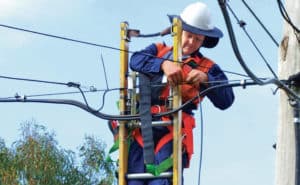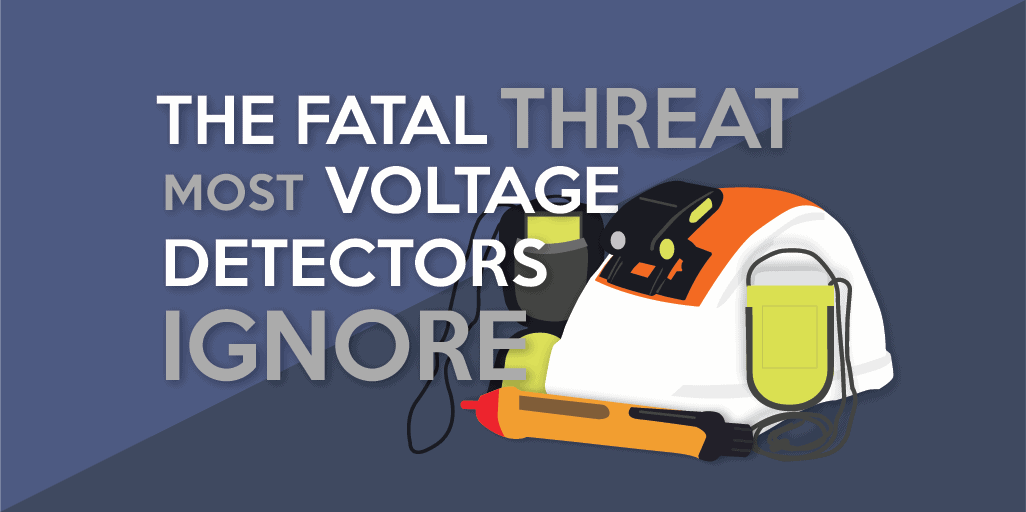 Companies have done an admirable job improving electrical safety standards by mandating standard personal protective equipment (PPE) and instituting procedures like Lockout/Tagout (LOTO), but many injuries and deaths occur due to energized sources such as downed powerlines or metal objects electrified by damaged components.
Companies have done an admirable job improving electrical safety standards by mandating standard personal protective equipment (PPE) and instituting procedures like Lockout/Tagout (LOTO), but many injuries and deaths occur due to energized sources such as downed powerlines or metal objects electrified by damaged components.
Many companies have developed a variety of basic voltage detection devices to combat this threat, but even that line of defense has several stunning shortcomings including easily blocked sensors, inability to detect through basic shielding, and a near-universal lack of current detection capabilities.
Most Voltage Detectors Lack Current Detection
Most personal voltage detectors are limited by how they do not detect a source of voltage itself but rather the electrical field it produces. Voltage is deadly, but electrical fields are weak. So weak, in fact, that they can be blocked by almost anything. No voltage detector can function if whatever it’s detecting can’t reach its sensors, so anyone utilizing a voltage detector that is handheld or worn on the body must stay acutely aware of whether or not their device is actually functioning: an improper grip or a heavy jacket could wipe out their first line of electrical safety defense.
Detector error isn’t always a matter of blocked sensors or user mishandling. Factors such as relative humidity or the presence of multiple electrical fields can shorten detection distance and severely limit the effectiveness of most detectors. In fact, many materials create a barrier that electrical fields can’t penetrate. By the time the voltage source is exposed enough to detect, it may already be too late.
Most voltage detectors lack the ability to detect current (technically, the magnetic fields that current creates). Unlike their electrical counterparts, magnetic fields can pass through solid objects so utilizing a device that detects current, as well as voltage, provides an extra layer of protection. Unfortunately, the majority of detection devices available on the market today still only detect voltage which makes about as much safety sense as going out into the field with only one glove.
Learn more about voltage and current detection here: https://youtu.be/ESvS6vXj8KA
PPE that Detects both Voltage AND Current

It’s not all doom and gloom in the world of electrical safety. Safeguard Equipment’s relentless innovation and commitment to worker safety has led to the creation of a wearable voltage detector that has solved the issue of sensor blockage and is capable of detecting current.
Compass™ is a lightweight and incredibly durable device that clips onto the brim of any hard hat to deliver 360° detection. This positioning also without the sensor disruption found with most devices worn on the user’s arm or around their neck. It also comes in a model designed to detect lower voltage power sources than a traditional detector, making Compass™ the ideal option for workers in any profession that carries the risk of electrical injury. And it seems surprising given current’s lethal nature, but Compass™ is actually the only portable non-contact device with the power to detect magnetic fields so its users gain unparalleled awareness of the voltage and current in their surroundings.

Compass offers the ability to detect current through conduit.
Compass: Worlds Best Personal Current Detector
To learn more about Compass™, schedule a live demonstration, or request a sample unit to test in your organization visit www.safeguardequipment.com today.
References:
Johnson, D., 2020. NFPA Studies Fatal & Non-Fatal Electrical Injuries. [online] Ishn.com. Available at: <https://www.ishn.com/articles/109484-nfpa-studies-fatal-non-fatal-electrical-injuries> [Accessed 3 December 2020].
Views: 23

